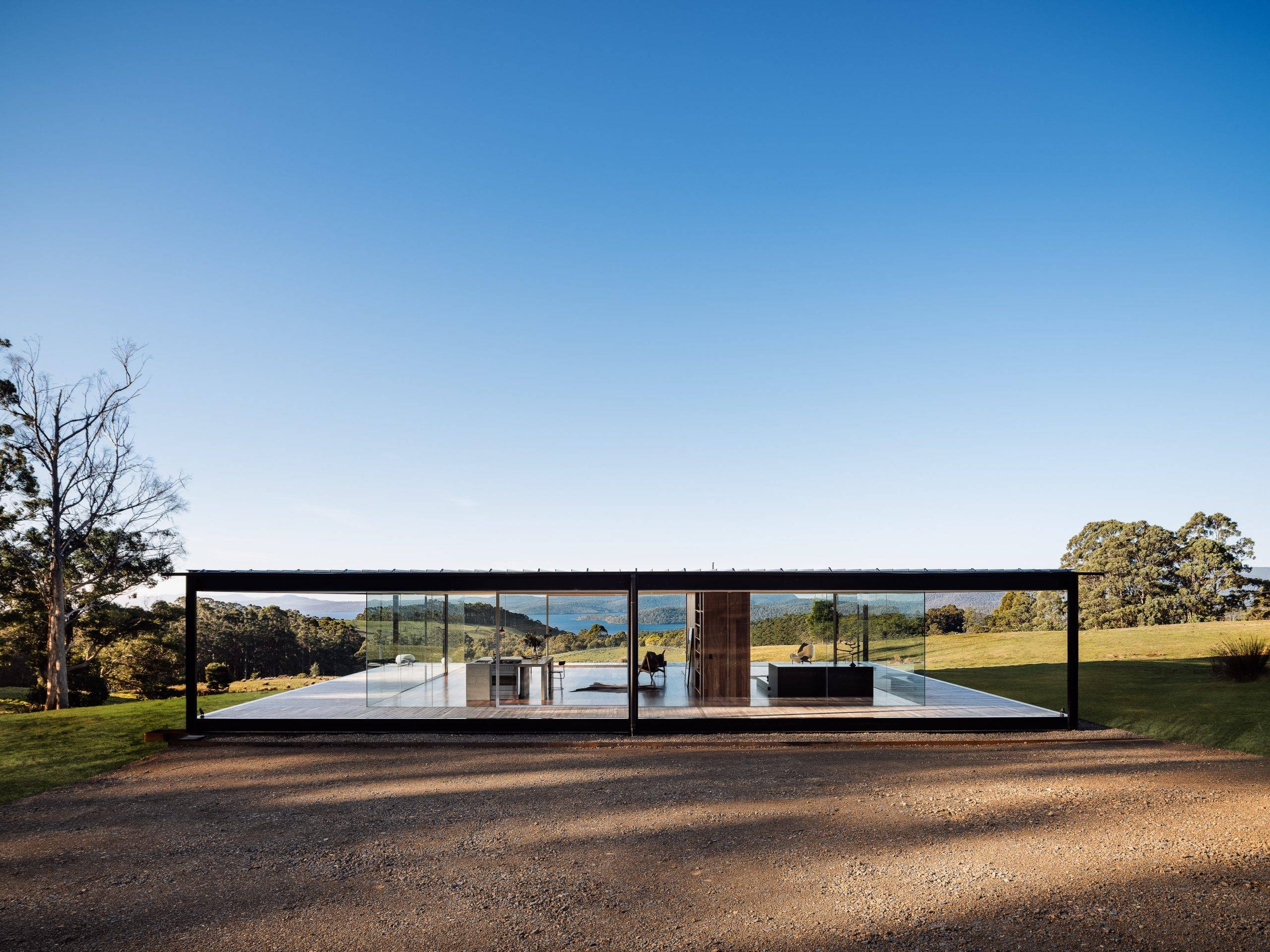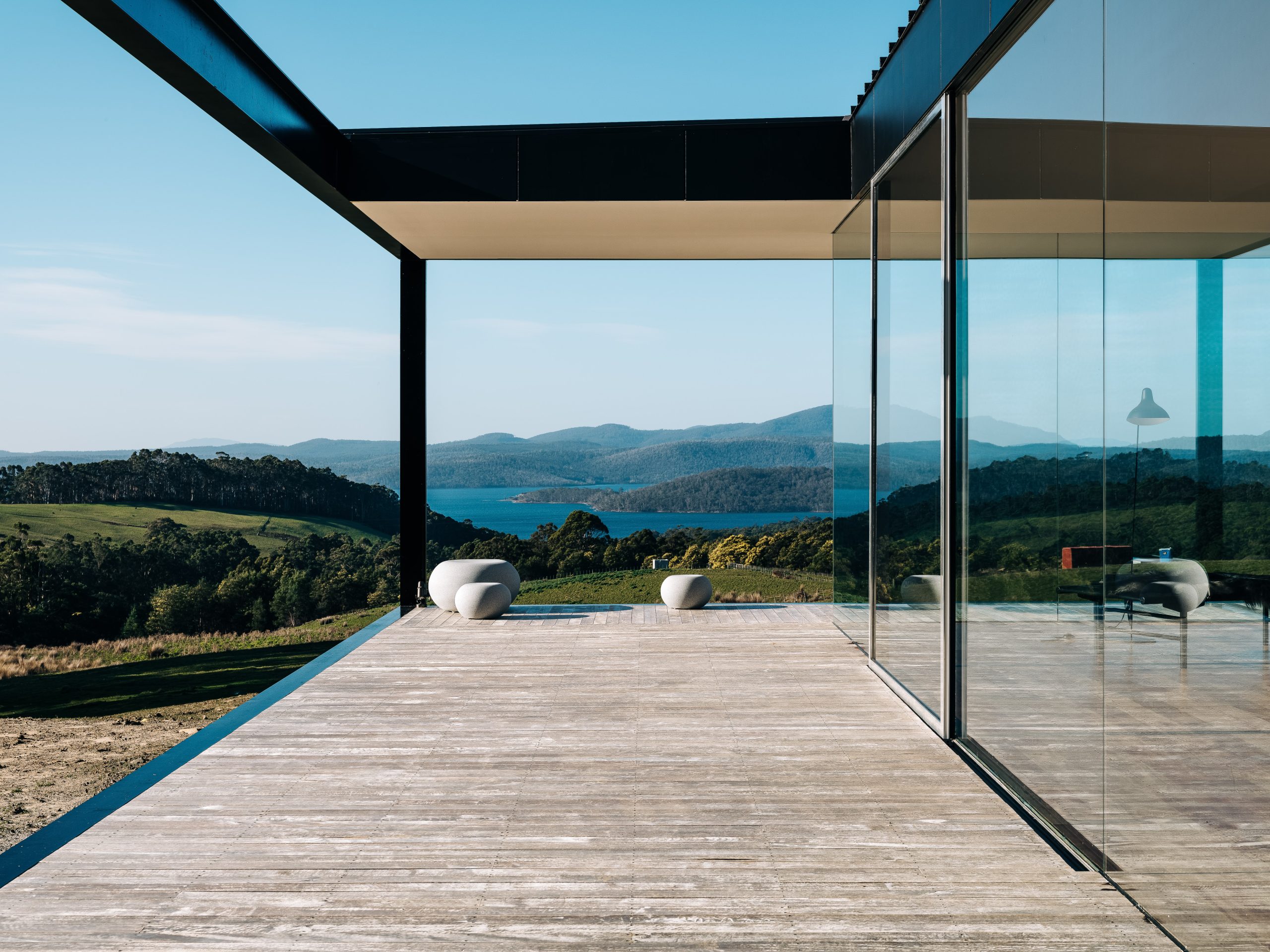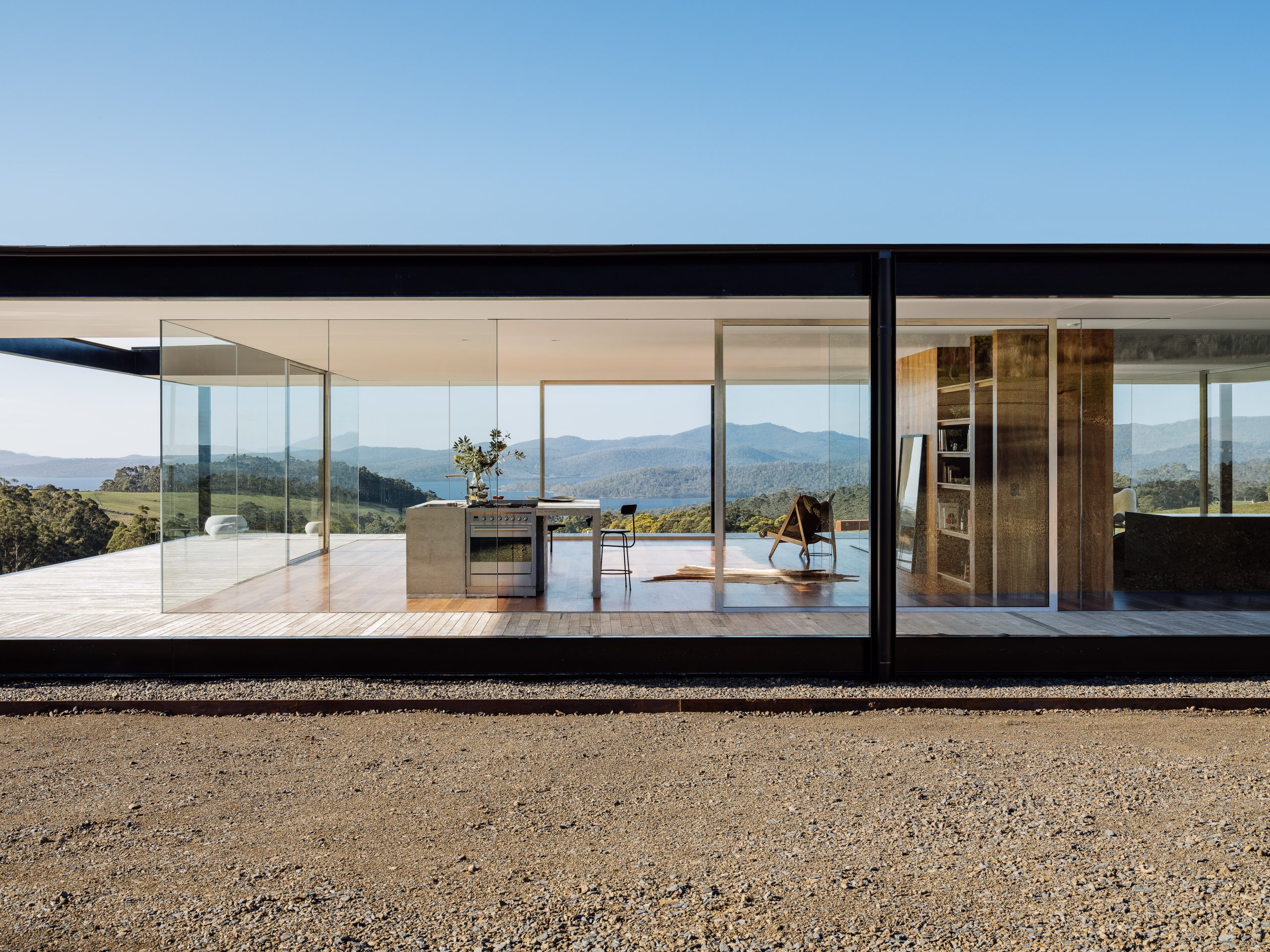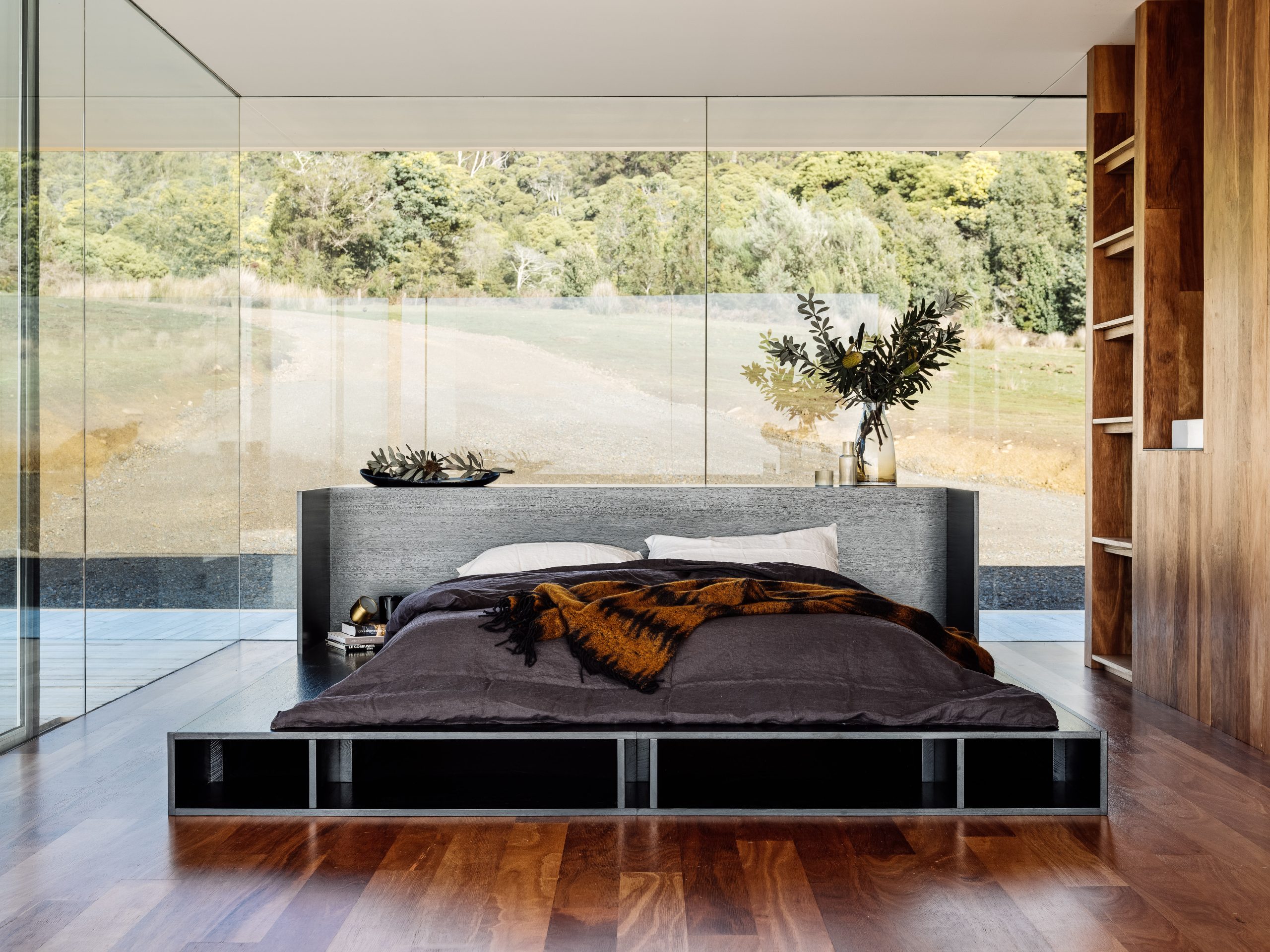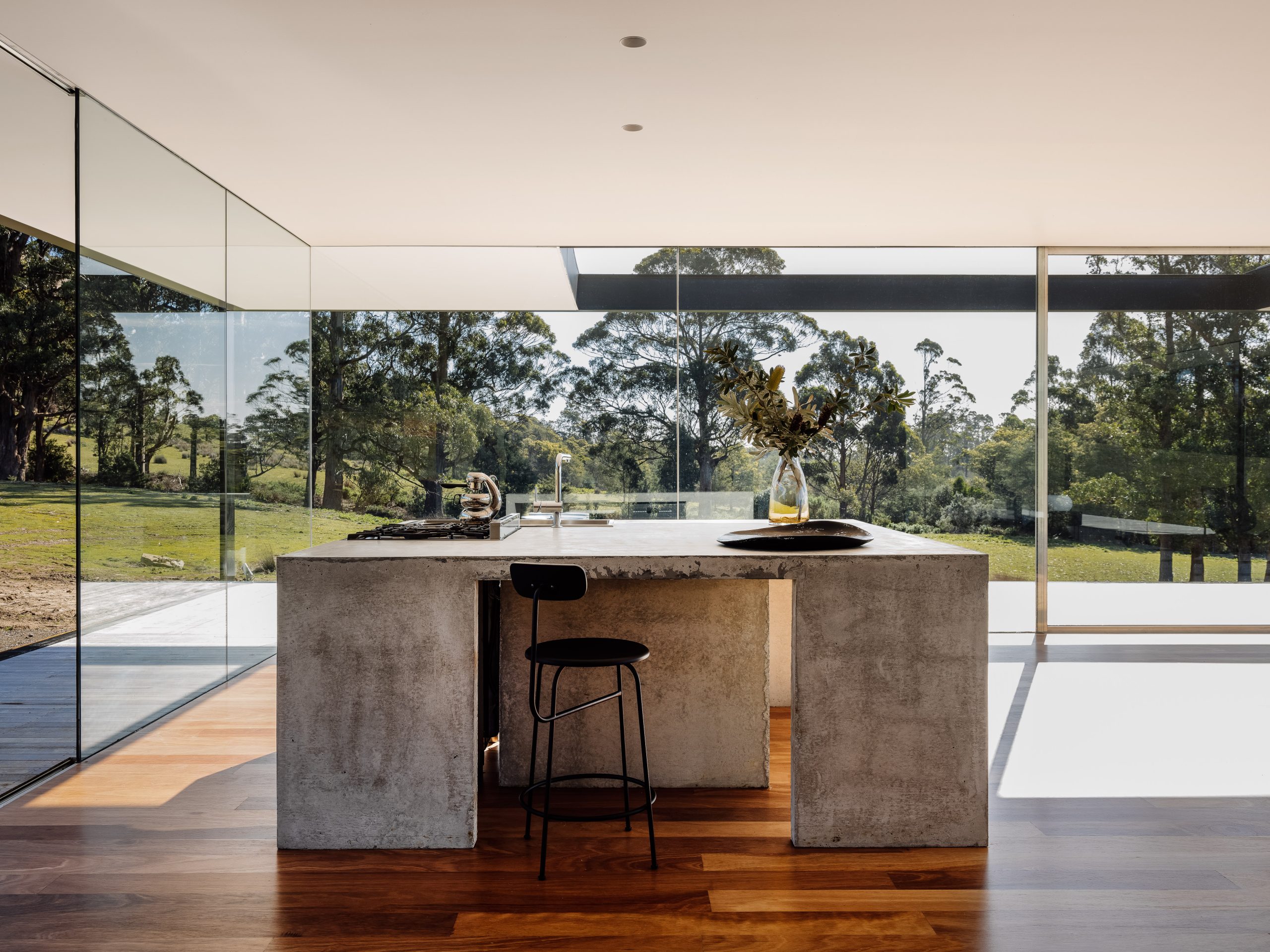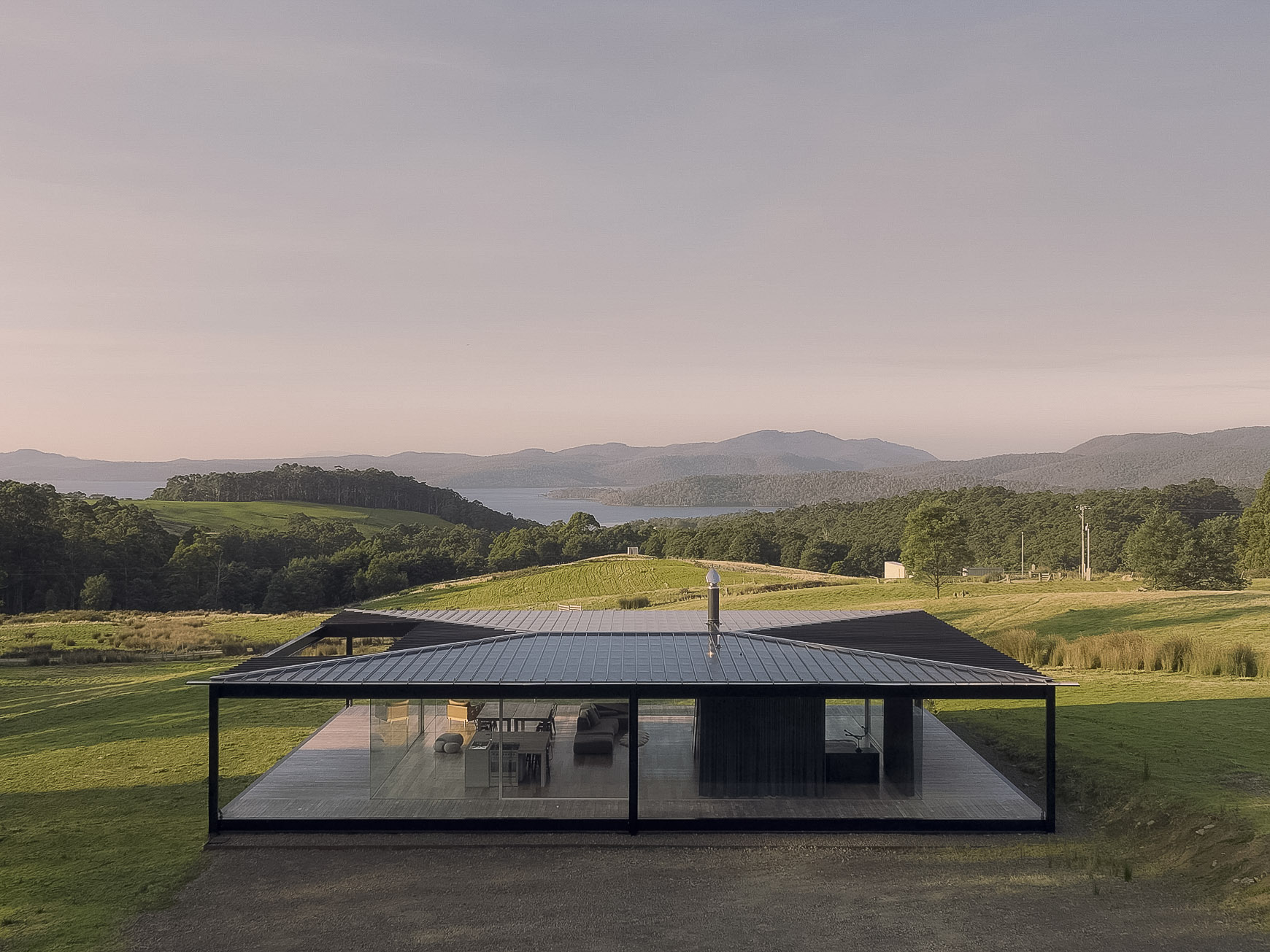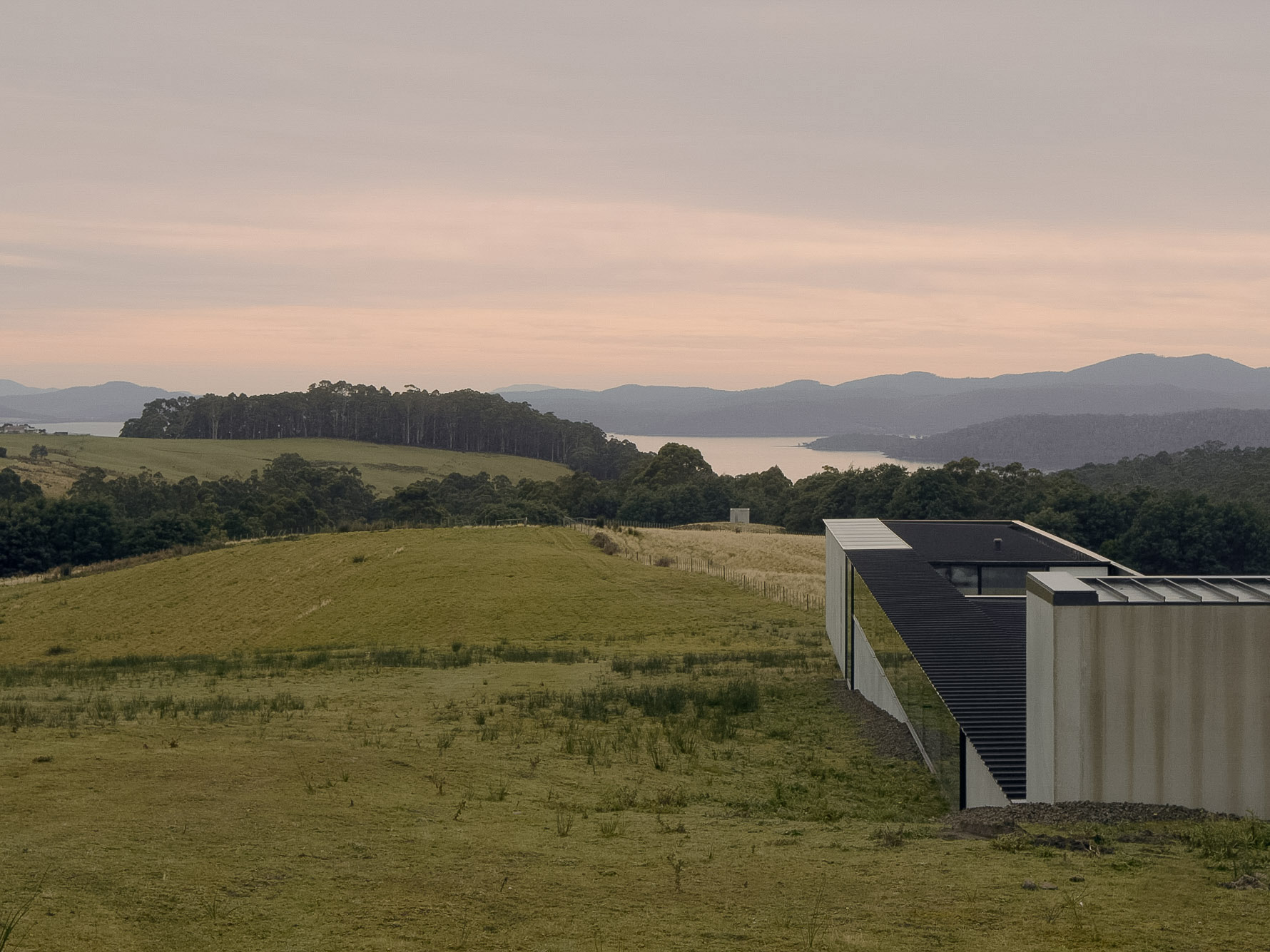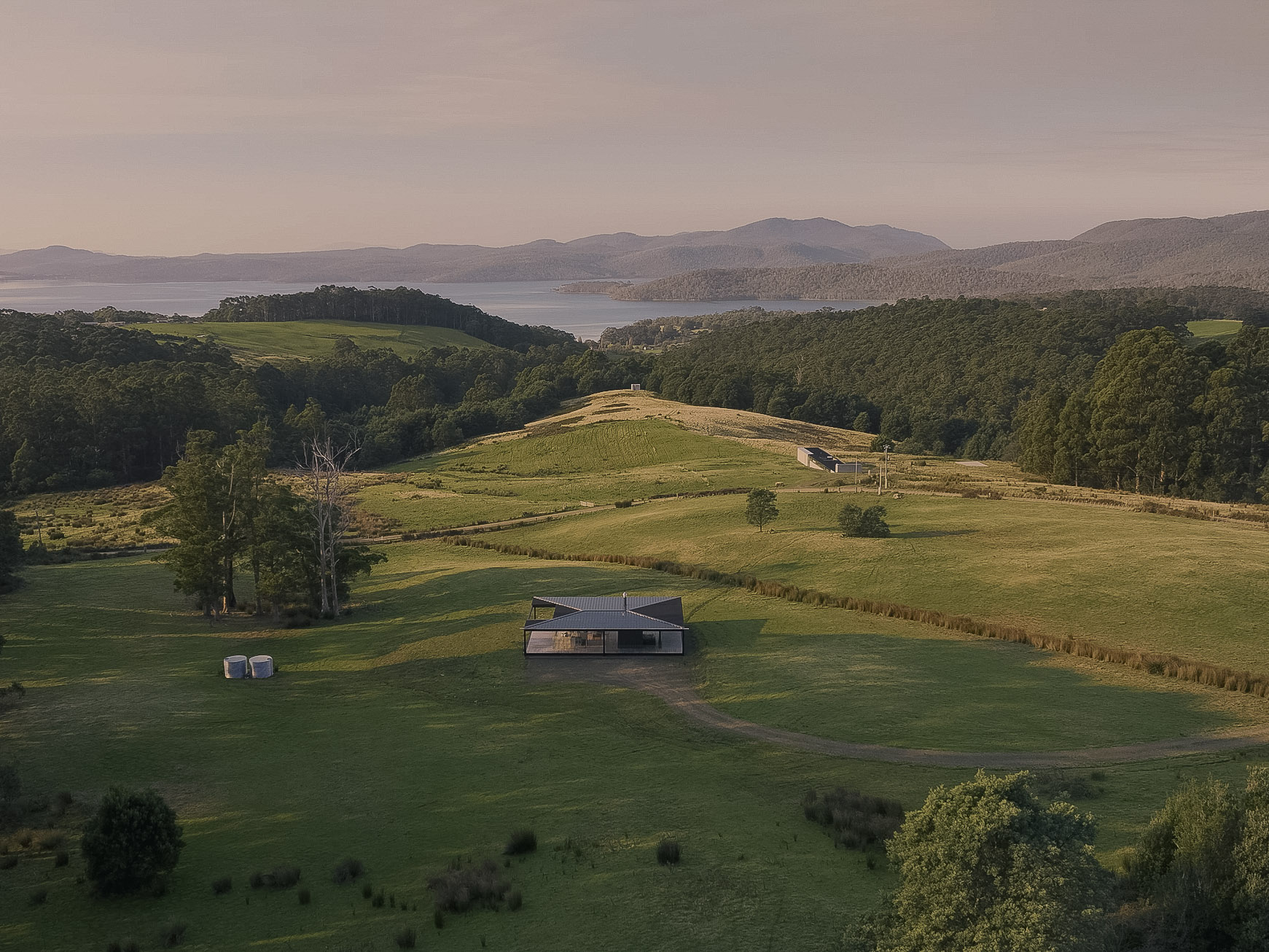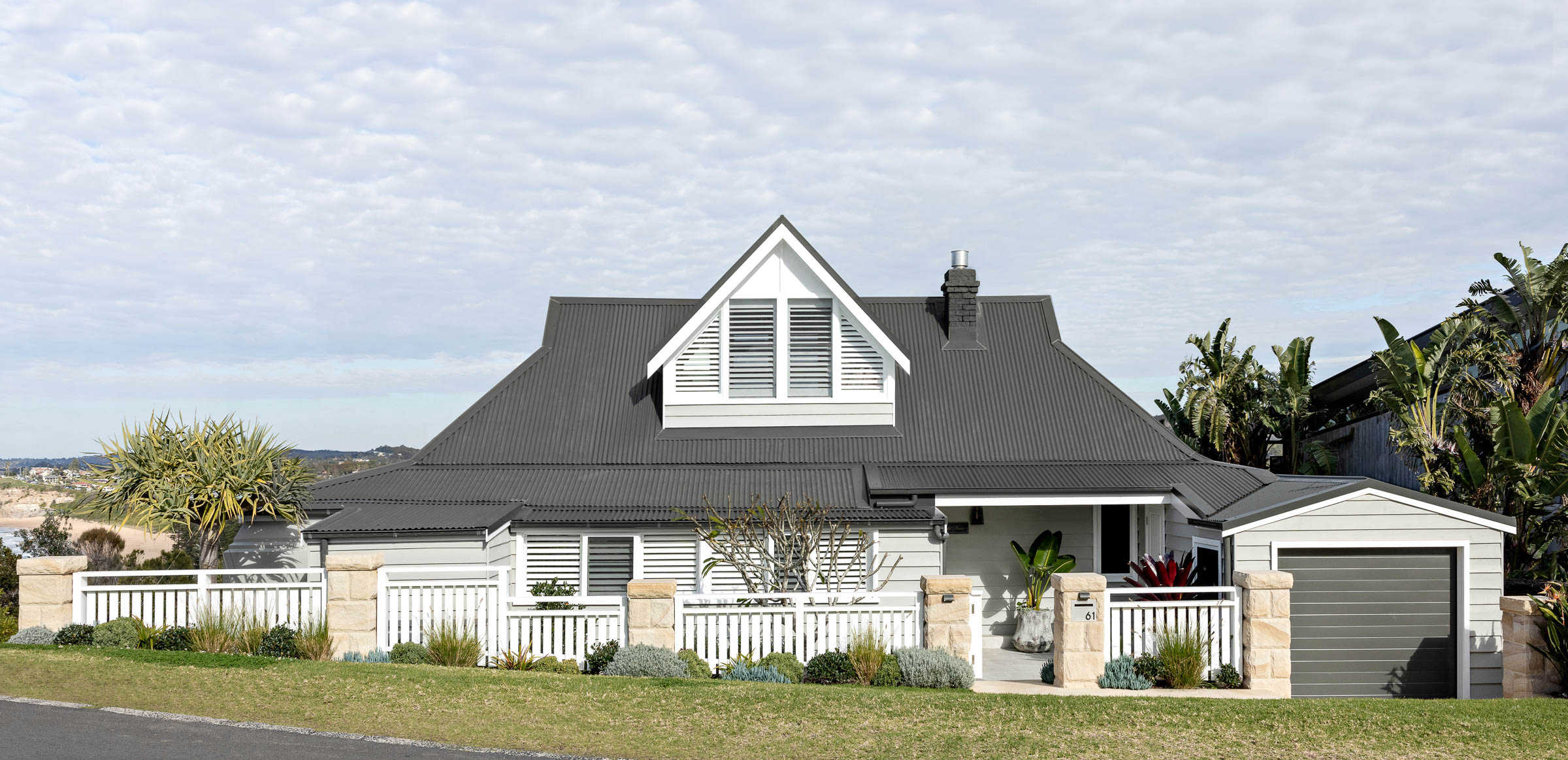When art meets architecture in Tasmania
A rare design trilogy on Tasmania’s Grooms Hill Road, Triptych blends architecture, nature and privacy across two titles with sweeping water views and serious creative soul.
On Tasmania’s dramatic Tasman Peninsula, near Koonya, three strikingly different buildings emerge from the rugged landscape, forming a trio of structures that demonstrate how art meets architecture.
Known collectively as Triptych, this ambitious project by Room 11 Architects is more than just a contemporary residence and a guest house – it’s a conversation piece and experience rolled into one.
The unrivalled property was showcased on Season 11, Episode 1 of Grand Designs Australia and has graced the cover of Tasmania Living magazine. Triptych is fun, a little bit quirky, and a big helping of eccentric.
Completed in 2023, this rare slice of real estate, spanning more than 40 hectares in a remote part of the Apple Isle, has now come to market with price expectations of $3.5 million. It will go under the hammer on June 15, marketed through Georgie Rayner of The Agency Hobart and David Medina of Sotheby’s International Realty NSW.
Crafted by Room 11’s design duo, Thomas and Kate Bailey, Triptych was commissioned by Sydney-based art director and writer Jonathan Kneebone. He wanted a regional retreat that would not only pay homage to the land but also push boundaries and the expectations of what a country house should be.
The result is a trio of individual buildings – each with its own distinct design, offering separate purposes surrounded by the pristine wilderness.
Blunt House, the main three-bedroom residence, is almost invisible at first glance. The low-lying structure is seemingly embedded in the hillside, a concrete construction disappearing into the earth, then cantilevered out towards the horizon.
In a bold decision by the architects, the long rectangular floor plan only allows one room – the main living space – to capture the stunning ocean backdrop overlooking Norfolk Bay.
The gun barrel view of the bay beyond the rolling hills was the inspiration for the architects, who have admitted that they began with the grand window snapshot in mind and then designed “backwards”.
Upon arrival, visitors descend via a dark, leather-lined corridor before entering the iconic lounge area, which offers unparalleled views.
Each bedroom is unique, with one featuring sheep skin-lined walls, while another has “upside down” windows best experienced when lying down on the bed.
The primary bathroom features a bath that is recessed into the floor, with mirrors embedded under the vanity for a distinctive perspective on the landscape, while soaking in the tub.
Packed with bespoke design elements created to withstand the elements, the main house’s brutalist concrete walls are punctuated by a custom ventilation system that harnesses the cross-flow from prevailing northerly and southerly winds, without interrupting the aesthetic.
A second building, known as The Glass House, is a one-bedroom guest pavilion perched higher on the sloping block, offering an entirely different experience to the main house. It has 360-degree views and walls of glass with almost nowhere to hide.
Finally, the third structure is The Folly, a mysterious cube with a rust-like Corten steel door opening to reveal what appears to be an old silo, but in actual fact, is a purpose-built contemplative space hiding a shallow reflective pool that simply mirrors the sky above.
The two designer residences on separate 20ha titles are 3.5 km from the coastal town of Koonya, 18 km from Port Arthur and 90 km from Hobart.
Triptych at 67 & 75 Grooms Hill Rd, Koonya is listed for sale with Georgie Rayner from The Agency Hobart and David Medina of Sotheby’s International Realty. The price guide is “more than” $3.5 million, and the auction is scheduled for July 14.
Records keep falling in 2025 as harbourfront, beachfront and blue-chip estates crowd the top of the market.
A divide has opened in the tech job market between those with artificial-intelligence skills and everyone else.
The 2026 McGrath Report warns that without urgent reforms to planning, infrastructure and construction, housing affordability will continue to slip beyond reach for most Australians.
Australia’s housing market has reached a critical juncture, with home ownership and rental affordability deteriorating to their worst levels in decades, according to the McGrath Report 2026.
The annual analysis from real estate entrepreneur John McGrath paints a sobering picture of a nation where even the “lucky country” has run out of luck — or at least, out of homes.
New borrowers are now spending half their household income servicing loans, while renters are devoting one-third of their earnings to rent.
The time needed to save a 20 per cent deposit has stretched beyond ten years, and the home price-to-income ratio has climbed to eight times. “These aren’t just statistics,” McGrath writes. “They represent real people and real pain.”
McGrath argues that the root cause of Australia’s housing crisis is not a shortage of land, but a shortage of accessibility and deliverable stock.
“Over half our population has squeezed into just three cities, creating price pressure and rising density in Sydney, Melbourne and Brisbane while vast developable land sits disconnected from essential infrastructure,” he says.
The report identifies three faltering pillars — supply, affordability and construction viability — as the drivers of instability in the current market.
Developers across the country, McGrath notes, are “unable to make the numbers work” due to labour shortages and soaring construction costs.
In many trades, shortages have doubled or tripled, and build costs have surged by more than 30 per cent, stalling thousands of projects.
Need for systemic reform
McGrath’s prescription is clear: the only real solution lies in increasing supply through systemic reform. “We need to streamline development processes, reduce approval timeframes and provide better infrastructure to free up the options and provide more choice for everyone on where they live,” he says.
The 2026 edition of the report also points to promising trends in policy and innovation. Across several states, governments are prioritising higher-density development near transport hubs and repurposing government-owned land with existing infrastructure.
Build-to-rent models are expanding, and planning reforms are gaining traction. McGrath notes that while these steps are encouraging, they must be accelerated and supported by new construction methods if Australia is to meet demand.
One of the report’s key opportunities lies in prefabrication and modular design. “Prefabricated homes can be completed in 10–12 weeks compared to 18 months for a traditional house, saving time and money for everyone involved,” McGrath says.
The report suggests that modular and 3D-printed housing could play a significant role in addressing shortages while setting a new global benchmark for speed, cost and quality in residential construction.
Intelligent homes
In a section titled Weathering the Future: The Power of Smart Design, the report emphasises that sustainable and intelligent home design is no longer aspirational but essential.
It highlights new technologies that reduce energy use, improve thermal efficiency, and make homes more resilient to climate risks.
“There’s no reason why Australia shouldn’t be a world leader in innovative design and construction — and many reasons why we should be,” McGrath writes.
Despite the challenges, the tone of the 2026 McGrath Report is one of cautious optimism. Demand is expected to stabilise at around 175,000 households per year from 2026, and construction cost growth is finally slowing. Governments are also showing a greater willingness to reform outdated planning frameworks.
McGrath concludes that the path forward requires bold decisions and collaboration between all levels of government and industry.
“Australia has the land, demand and capability,” he says. “What we need now is the will to implement supply-focused solutions that address root causes rather than symptoms.”
“Only then,” he adds, “can we turn the dream of home ownership back into something more than a dream.”
On October 2, acclaimed chef Dan Arnold will host an exclusive evening, unveiling a Michelin-inspired menu in a rare masterclass of food, storytelling and flavour.
By improving sluggish performance or replacing a broken screen, you can make your old iPhone feel new agai









